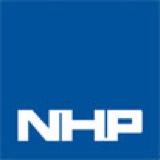Title Page
-
Document No.
-
Category
-
Audit Title
-
Site/Department
-
Conducted on
-
Review Date
-
Prepared by
-
Assessor(s)
Section One - Suitability
-
1.1 Is the equipment designed & suitable for the purpose for which it is used?
-
1.2 Has the equipment been selected with regard for the H&S of the users?
-
1.3 Is the use of the equipment restricted to purposes for which it is suitable?
-
1.4 Are written operating instructions available for the equipment being assessed?
Section Two - Maintenance
-
2.1 Is the equipment subject to periodic inspection?
-
2.2 Is all maintenance work arising from an inspection or planned maintenance work recorded?
-
2.3 Where the answer to question 2.2 is Yes. Is the record kept up to date?
-
2.4 Is all maintenance, repair, servicing etc of the equipment, restricted to listed, designated competent staff?
Section Three - Restrictions on Use
-
3.1 Is the use of the equipment restricted to authorised staff?
-
3.2 When specific operator training and work instructions are required for the equipment, has it been given?
-
3.3 Is all staff that uses the equipment, and their supervisors, trained in SSoW, risk assessments, specific precautions and other safety requirements?
-
3.4 Are the training records signed?
Section Four - Equipment
-
4.1 Does the equipment comply with statutory requirements and / or British European standards? (CE marking should be on the equipment.) If unsure, treat as No and complete section 5.
Section Five - Guarding of Machinery
-
5.1 Are all dangerous parts of equipment guarded or interlocked so far as practical to protect against danger?
-
5.2 Where steps & work platforms are provided is access to moving /rotating parts of equipment still prevented?
-
5.3 Where equipment cannot practicably be guarded in accordance with 5.1, are jigs, push-sticks, holders or other protective devices used to prevent risks to Health and Safety?
-
5.4 Where protection in accordance with elements 5.1 or 5.2 is not practicable, are the risks adequately controlled by the provision of permits, information, instruction, training and supervision?
Section Six - Specified Hazards
-
6. Are the following specified hazards reduced to as low a level as practical?
-
6.1 Ejected/Falling objects
-
6.2 Noise
-
6.3 Rupture or disintegration of the equipment
-
6.4 Fire or overheating
-
6.5 Unintended discharge of any article or gas, dust, liquid, vapour or other substance
Section Seven - Burn Protection
-
7.1 Are all hot/cold parts of the equipment, which are likely to cause burns, protected?
-
7.2 Are all hot/cold substances or articles associated with the equipment, protected to prevent burns?
Section Eight - Control Systems
-
8.1 Is the equipment provided with start, stop and where applicable, level controls that are clearly visible and easily identifiable and which require deliberate action to operate?
-
8.2 If the equipment causes a hazard in operation, is it fitted with a readily accessible and clearly identified emergency stop control which overrides other controls on the equipment?
-
Elements 8.3 to 8.6 apply wherever mechanised plant creates a danger zone.
-
8.3 Are all controls safely situated out of any danger zone associated with the equipment?
-
8.4 Can the operator at the controls of the equipment ensure that nobody is in the danger zone while he/she is operating the equipment?
-
8.5 If 8.4 is not reasonably practicable, is there a safe system of work in operation to prevent anybody from entering a danger zone while the equipment is operating?
-
8.6 If neither 8.4 nor 8.5 is reasonably practicable, is an audible or visual warning given before the equipment is started?
Section Nine - Isolation from Sources of Energy
-
9.1 Is the equipment capable of being isolated from its energy supply by safe, clearly identifiable means?
-
9.2 Can the equipment be re-energised without exposing any persons to risks to Health and Safety?
Section Ten - Securing
-
10.1 Is the equipment stabilised / secured / restrained as far as is necessary to prevent hazard?
-
10.2 Are steps, access platforms, walkways, guardrails stabilised, secured, free from obstruction & trip points
Section Eleven – Workplace Environment
-
11.1 Is the equipment installed and used in an appropriate suitable location and environment?
-
11.2 Is there sufficient lighting to prevent hazards from arising from poor visibility?
-
11.3 Is the area free from articles, substances & waste that may cause a hazard?
-
11.4 Is their adequate space around the machine to allow safe & easy access?
-
11.5 Are the equipment & its access platforms steps etc free from substances, waste, tools & equipment?
-
11.6 Where seating is required, is it provided & in good condition?
-
11.7 Is the equipment in an un-exposed area?
-
11.8 Is the equipment & work area free from extremes of temperature?
Section Twelve - PPE
-
12.1 If Specific PPE is required for this equipment /area is it available?
-
12.2 Are operators aware that the PPE is required & know how to use it?
Section Thirteen – Maintenance Safety
-
13.1 Is all maintenance carried out with the equipment stopped?
-
13.2 Where 13.1 is not reasonably practicable, is maintenance work carried out without entry to any danger zone or, by staff following specific procedures to protect against danger?
Section Fourteen - Markings and Warnings
-
14.1 Are all necessary Health & Safety labels & signs etc fitted, visible & legible? E.g. Prohibited Actions. PPE. Hazardous Parts/ Surfaces/Materials.Emergency Action
-
14.2 Do all signs & warnings, conform to the current legislation.












